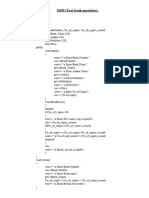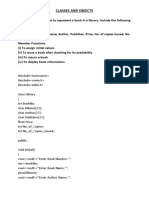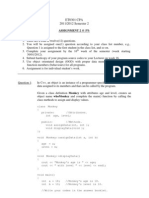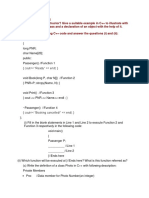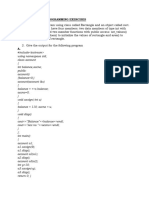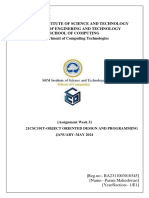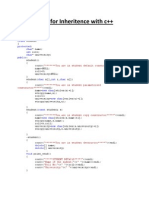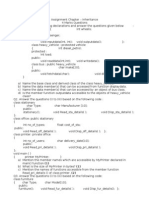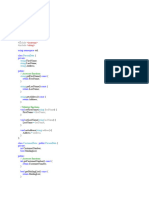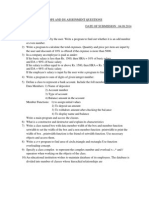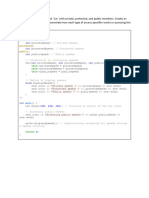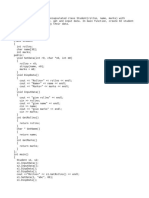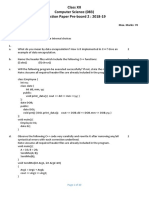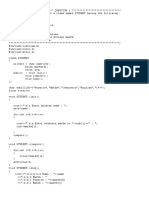0% found this document useful (0 votes)
23 views3 pagesClass Inheritance
The document discusses class relationships and access specifiers in C++. It defines several classes with different access levels and asks questions about which members can be accessed from which classes and objects. Determining access for data members and member functions in derived classes and objects is the focus.
Uploaded by
Ganesh DumkaCopyright
© © All Rights Reserved
We take content rights seriously. If you suspect this is your content, claim it here.
Available Formats
Download as PDF, TXT or read online on Scribd
0% found this document useful (0 votes)
23 views3 pagesClass Inheritance
The document discusses class relationships and access specifiers in C++. It defines several classes with different access levels and asks questions about which members can be accessed from which classes and objects. Determining access for data members and member functions in derived classes and objects is the focus.
Uploaded by
Ganesh DumkaCopyright
© © All Rights Reserved
We take content rights seriously. If you suspect this is your content, claim it here.
Available Formats
Download as PDF, TXT or read online on Scribd
/ 3

